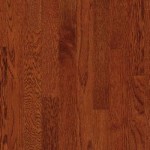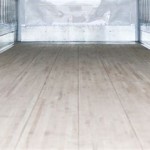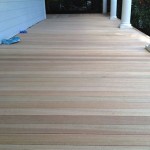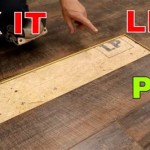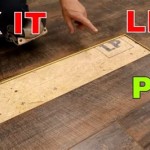Average Cost of Fitting Wooden Flooring
The allure of wooden flooring lies in its timeless aesthetic, durability, and ability to increase a property's value. However, before embarking on a wooden flooring project, understanding the associated costs is crucial. The overall expense is influenced by various factors, including the type of wood, the size of the area to be covered, the complexity of the installation, and regional labor rates. This article provides a comprehensive overview of the average cost of fitting wooden flooring, delving into the contributing elements and offering insights into potential cost-saving strategies.
Wooden flooring encompasses a wide range of options, each with its own price point. Solid hardwood, engineered wood, laminate flooring, and even bamboo flooring (often categorized with wood due to its appearance and installation methods) all fall under this broad umbrella. Solid hardwood, being the most traditional and premium option, typically commands the highest price. Engineered wood, composed of a hardwood veneer bonded to multiple layers of plywood, offers a balance between cost and performance. Laminate flooring, made from a composite wood core with a photographic layer mimicking wood grain, is the most budget-friendly choice. Bamboo, while technically a grass, provides a sustainable and aesthetically pleasing alternative with a mid-range price tag.
The initial cost of the flooring material itself constitutes a significant portion of the overall expense. Solid hardwood can range from $8 to $25 per square foot, depending on the species (oak, maple, walnut, etc.) and grade of the wood. Engineered wood generally falls between $4 and $15 per square foot, offering a more accessible price point for many homeowners. Laminate flooring is the most economical option, typically costing between $1 and $5 per square foot. Bamboo flooring typically resides in the $3 to $8 per square foot range.
Beyond the material cost, installation charges are a crucial consideration. The complexity of the installation process can significantly impact the labor costs. A straightforward installation on a level subfloor will be less expensive than a complex installation involving subfloor repairs or intricate patterns. The geographic location also plays a role, as labor rates vary considerably across different regions.
Professional installation is generally recommended, particularly for solid hardwood and engineered wood flooring. While DIY installation might seem appealing to save money, improper installation can lead to various problems, including uneven surfaces, squeaking floors, and premature wear and tear. Hiring a qualified and experienced flooring installer ensures a proper and durable installation, ultimately saving money in the long run by avoiding costly repairs or replacements.
Factors Affecting Wooden Flooring Installation Costs
Several factors influence the final cost of fitting wooden flooring. Understanding these factors allows for more accurate budgeting and informed decision-making throughout the project.
Type of Wood: As mentioned previously, the type of wood is a primary cost driver. Solid hardwood, particularly rarer or more exotic species, will be the most expensive. Engineered wood offers a more budget-friendly alternative while still providing a real wood surface. Laminate flooring is the most affordable option, although it lacks the same authentic look and feel as real wood.
Subfloor Condition: The condition of the existing subfloor is a critical factor that often gets overlooked. If the subfloor is uneven, damaged, or requires significant repairs, this will add to the overall cost. Addressing subfloor issues is essential for ensuring a stable and level foundation for the new wooden flooring.
Installation Complexity: The complexity of the installation process influences the labor costs. A simple installation in a square or rectangular room will be less expensive than an installation in a room with angles, curves, or complex patterns. Intricate patterns, such as herringbone or chevron, require more time and expertise, resulting in higher labor charges.
Room Size and Shape: The size of the area to be covered is a direct determinant of the material cost. Larger rooms require more flooring material, increasing the overall expense. The shape of the room can also influence the amount of waste material, as odd shapes often require more cuts and result in more unusable pieces.
Geographic Location: Labor rates vary significantly across different geographic locations. Areas with a higher cost of living typically have higher labor rates for flooring installation. Obtaining multiple quotes from local contractors is crucial to ensure a competitive price.
Removal of Existing Flooring: The cost of removing existing flooring, such as carpet, tile, or old wood flooring, is often an additional expense. Some homeowners choose to remove the existing flooring themselves to save money, while others prefer to have the flooring installer handle the removal. Disposal fees for the removed flooring may also apply.
Additional Materials: In addition to the flooring material and labor, other materials may be required, such as underlayment, adhesives, nails, and trim. Underlayment provides cushioning, sound insulation, and moisture protection. Adhesives are used to bond certain types of flooring to the subfloor. Nails are used to secure solid hardwood flooring. Trim, such as baseboards and quarter-round molding, is used to cover the edges of the flooring and create a finished look.
Average Cost Breakdown and Examples
To provide a clearer understanding of the average cost of fitting wooden flooring, consider the following breakdown:
Material Costs: This includes the cost of the wooden flooring itself. As mentioned earlier, solid hardwood ranges from $8 to $25 per square foot, engineered wood ranges from $4 to $15 per square foot, laminate flooring ranges from $1 to $5 per square foot, and bamboo flooring ranges from $3 to $8 per square foot.
Labor Costs: Installation labor typically ranges from $3 to $8 per square foot, depending on the complexity of the installation and the geographic location. This can vary greatly so obtaining several quotes is the smart path to take.
Subfloor Preparation: If subfloor repairs or leveling are required, this can add an additional $1 to $5 per square foot to the overall cost. This cost is highly variable, depending on the extent of the repairs needed.
Removal and Disposal: Removing and disposing of existing flooring can cost an additional $1 to $3 per square foot.
Additional Materials: Underlayment, adhesives, nails, and trim can add another $0.50 to $2 per square foot to the total cost.
Example 1: Laminate Flooring Installation in a 200 sq ft Room
Material (Laminate at $3/sq ft): $600
Labor (Installation at $4/sq ft): $800
Underlayment and Trim: $100
Total Estimated Cost: $1500
Example 2: Engineered Wood Flooring Installation in a 300 sq ft Room
Material (Engineered Wood at $7/sq ft): $2100
Labor (Installation at $5/sq ft): $1500
Subfloor Leveling: $300
Underlayment and Trim: $150
Total Estimated Cost: $4050
Example 3: Solid Hardwood Flooring Installation in a 150 sq ft Room
Material (Solid Hardwood at $12/sq ft): $1800
Labor (Installation at $6/sq ft): $900
Removal of Existing Flooring: $225
Underlayment and Trim: $75
Total Estimated Cost: $3000
These examples illustrate the range of costs associated with fitting wooden flooring, depending on the material chosen, the complexity of the installation, and the need for subfloor preparation.
Cost-Saving Strategies for Wooden Flooring Projects
While wooden flooring can be a significant investment, several strategies can help reduce the overall cost without compromising quality or aesthetics.
Compare Quotes from Multiple Contractors: Obtaining quotes from at least three different contractors is crucial to ensure a competitive price. Carefully review each quote, paying attention to the details of the work included, the materials used, and any warranties offered. Don't automatically choose the lowest quote; consider the contractor's experience, reputation, and customer reviews.
Choose a More Affordable Wood Type: Laminate flooring is the most budget-friendly option, while engineered wood offers a balance between cost and performance. If a real wood look is desired, consider choosing a more affordable species of hardwood or exploring engineered wood options with a thicker veneer.
Consider Doing Some of the Work Yourself: If you're comfortable with DIY projects, you can save money by handling some of the simpler tasks, such as removing existing flooring or painting the baseboards. However, it's generally recommended to leave the actual flooring installation to professionals to ensure a proper and durable result.
Look for Sales and Discounts: Many flooring retailers offer sales and discounts on their products, particularly during certain times of the year, such as holidays or seasonal clearances. Signing up for email newsletters or following retailers on social media can help you stay informed about upcoming sales and promotions.
Minimize Waste: Carefully measure the room and calculate the amount of flooring material needed to avoid overbuying. Plan the installation to minimize cuts and maximize the use of each piece of flooring. Consult with the flooring installer to determine the most efficient layout for the room.
Negotiate the Price: Don't be afraid to negotiate the price with the flooring contractor. They may be willing to offer a discount or match a lower price from a competitor. Be polite and professional, and explain your budget constraints.
By implementing these cost-saving strategies, homeowners can make their wooden flooring projects more affordable without sacrificing the desired aesthetic and functionality.
Planning a wooden flooring project requires careful consideration of material costs, installation charges, and various other factors. By understanding these elements and implementing cost-saving strategies, homeowners can achieve their desired flooring aesthetic within a reasonable budget. Research, careful planning, and qualified professional installation contribute to a successful and satisfying wooden flooring project.

Average Hardwood Flooring S In 2024 Forbes Home

Cost To Install Hardwood Floors The Home Depot

How Much Does Hardwood Flooring Cost 2024 Guide

Cost To Install Hardwood Floors The Home Depot

How Much Does Hardwood Flooring Cost 2024 Guide

Cost To Install Laminate Flooring In 2024 Forbes Home

Flooring Installation Cost 2024 Guide Modernize

How Much Does Hardwood Flooring Cost 2024 Guide

How Much Does Flooring Installation Cost In 2024 Forbes Home

Cost To Install Laminate Floors The Home Depot
Related Posts



